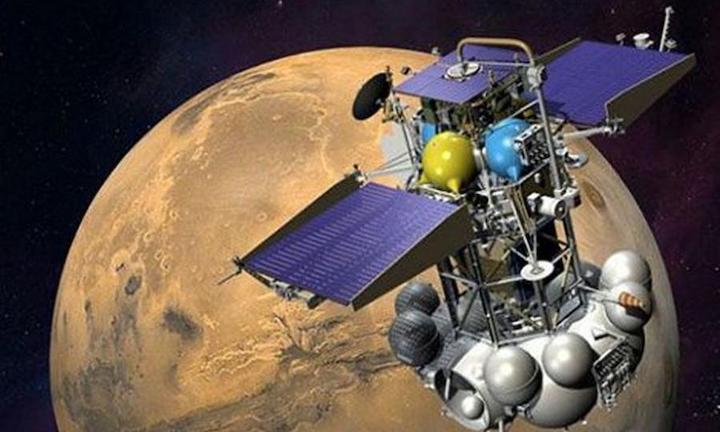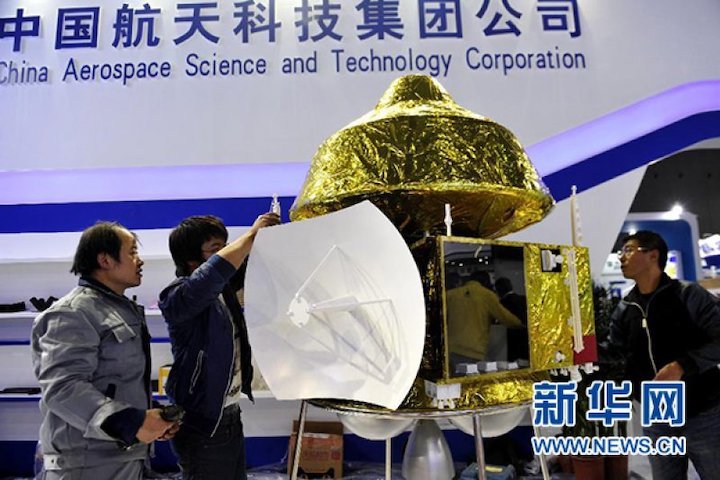18.04.2019
Mars probe to be launched in 2020, while engineers develop technologies for a Jupiter probe launch about 2029

An artist’s impression of the Chinese Mars probe Yinghuo-2, which will be launched next year. Photo: Xinhua
-
Future Chinese spacecraft will go beyond the Moon and fly to Mars and even deeper into space to reach Jupiter, the largest planet in our solar system, according to official plans.
In a space exploration plan spanning the next decade, Beijing has set its sights on the red planet and Jupiter.
However, China’s Mars exploration program made a bad start in November 2011 when the Yinghuo-1, intended to be the first Chinese spacecraft to Mars to study its surface, atmosphere, ionosphere and magnetic field, disintegrated over the Pacific Ocean after its launch vehicle, Russia’s Fobos-Grunt, failed to escape the Earth’s gravitational pull.
Still, Beijing’s curiosity about Mars remains undampened despite that early stumble.
Chinese papers reported that Sun Zezhou, the chief architect of the Chang’e-4, which landed on the Moon’s dark side – the hemisphere that always faces away from Earth – this January in the first such mission, will also be responsible for the design of China’s new Mars probe.
Sun revealed during a seminar this week that the new probe, Yinghuo-2, would be similar to the Chang’e-4, but twice as heavy with a sizeable, autonomous rover, the Chitu, weighing about 200 kilograms. One of the goals of the mission is to search for evidence of both current and past life on the Martian surface, like biomolecules and biosignatures.

A model of the Yinghuo-2 Mars probe. Photo: Xinhua

An aerial view of China’s Mars simulation camp in western Qinghai province. Photo: China News Service
The Yinghuo-2 will first endure an eight-month, 225-million-kilometer odyssey before reaching the red planet and transmitting signals from there to ground control in Beijing, which will take about 20 minutes to arrive, according to Sun.
Once there, the Chinese probe could face Mars’ monstrous sandstorms, another challenge that Sun’s team has been trying to surmount.
So far, Beijing’s Mars probe program is progressing smoothly toward a launch in the middle of 2020, with components of the probe and some scientific payloads entering the final assembly and testing phases. Simulated landings have also been conducted on China’s alpine, Mars-like Qinghai-Tibet plateau.
As for China’s audacious plans for future exploration beyond the inner solar system, including a mission to Jupiter, the country still needs new rocket and solar panel technologies for its probe to traverse 588 million kilometers to its destination.
For instance, Chinese engineers still need to crack technical hurdles to develop a cutting-edge radioisotope thermoelectric generator as well as its gigantic solar array wings to power the future Jupiter probe, just like the system that propelled the Juno, a NASA probe launched in 2011 which has been orbiting Jupiter since 2016.
Xinhua reported last year that a mission to Jupiter would be launched in about 2029.
Beijing is also readying the Chang’e-5 lunar probe for a launch by the end of this year to collect and return about two kilograms (4.4 lb) of samples from two meters below the surface of its landing site in the northwestern part of the Moon.
Beijing wants to build a manned lunar base within the next decade and start mining the Moon for energy resources.
Another sample-returning mission to Mars is also being planned for the 2030s, according to China Aerospace Science and Technology Corp.
Quelle: ASIATIMES
